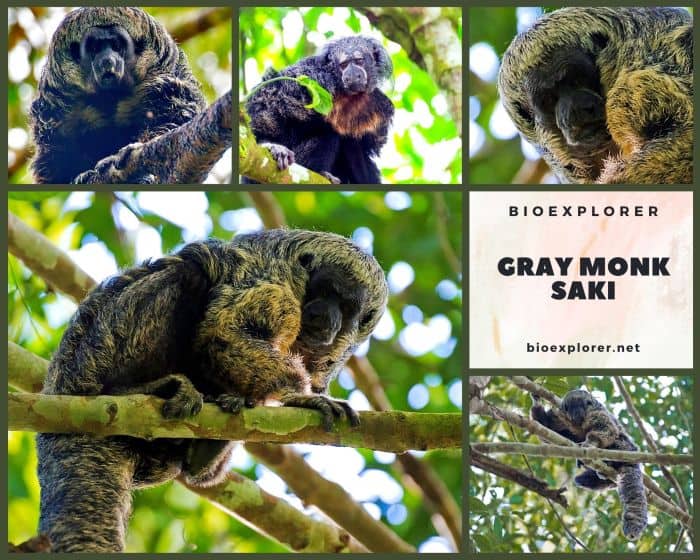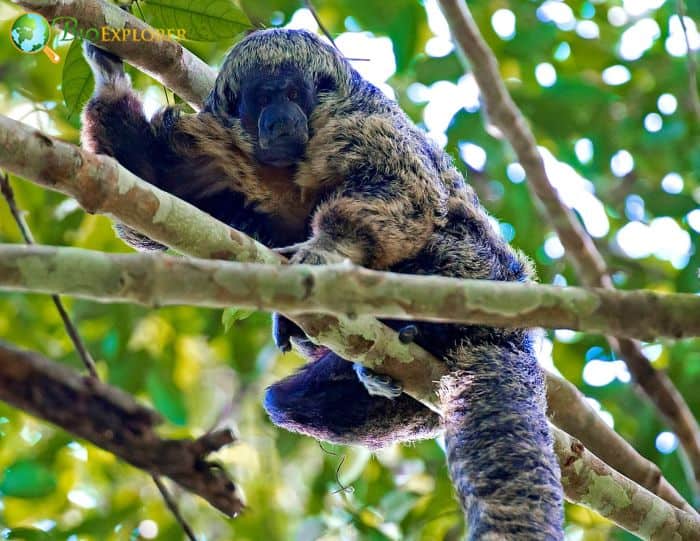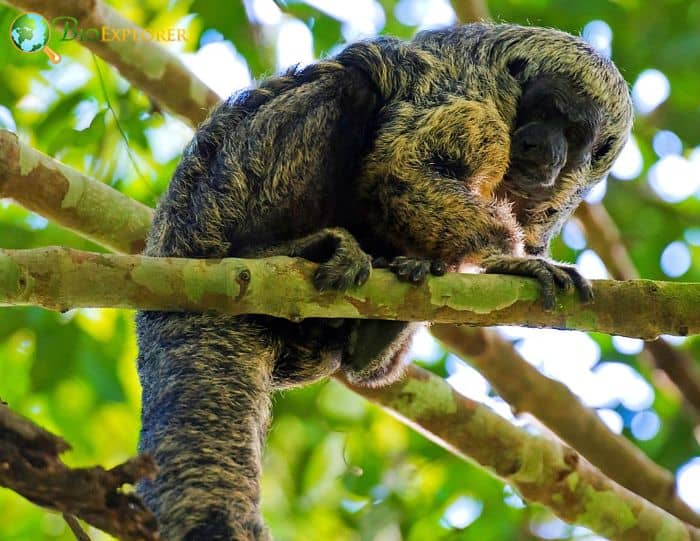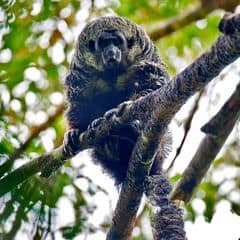
| Animalia | Primates | Pitheciidae | Pithecia | Pithecia irrorata |
Gray’s Bald-faced Saki Distribution
Gray’s Bald-faced Saki Characteristics

Gray’s bald-faced saki[1] (Pithecia irrorata), also known as Rio Tapajós saki, is a New World Monkey native to South America.
- These South American primates are found in parts of western Brazil, southeastern Peru, southeastern Colombia, and possibly northern Bolivia.
- Gray’s bald-faced sakis are medium-sized monkeys with an unforgettable presence thanks to their distinctive coat.
- Their long, thick hair gives an unshorn and shaggy look. Although their color is read as “grizzled” grey, their hair is actually black with long white streaks. Their faces are unpigmented, appearing pink/gray and darkening with age.
- As their name suggests, they have less facial hair than most other saki species.
- Their feet and hands are draped in white fur, although their forearms are browner, and adult males have a unique orange ruff.
- Their tails are dense and furry. These tails are not prehensile, meaning they cannot be used to grab branches like the tails of spiders or capuchin monkeys.
Gray’s Bald-faced Saki Facts

- Gray’s bald-faced sakis have a prominent hairline above the eyes, giving the impression of “bangs“.
- These monkeys are renowned for being reclusive because they avoid humans and quiet nature.
- Coat color can vary by geographic region, with females in the Acre region sometimes appearing lighter than females elsewhere.
- They exhibit a specific type of frugivory by mainly feeding on seeds of immature fruits.
- Gray’s bald-faced saki monkeys are arboreal, diurnal primates. They roost high in the trees at night and are active during the day.
Suggested Reading: Monkey Breeds
Cite This Page
APA7MLA8Chicago
BioExplorer.net. (2025, December 14). Gray’s Bald-faced Saki. Bio Explorer. https://www.bioexplorer.net/animals/mammals/monkeys/grays-bald-faced-saki/.
BioExplorer.net. "Gray’s Bald-faced Saki" Bio Explorer, 14 December 2025, https://www.bioexplorer.net/animals/mammals/monkeys/grays-bald-faced-saki/.
BioExplorer.net. "Gray’s Bald-faced Saki" Bio Explorer, December 14 2025. https://www.bioexplorer.net/animals/mammals/monkeys/grays-bald-faced-saki/.












